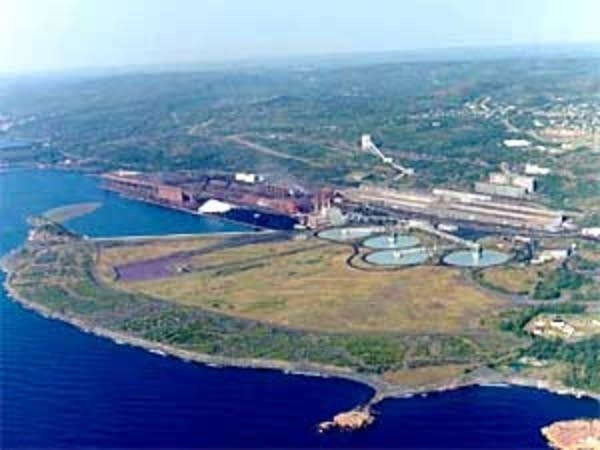Company seeks to reopen 1970s Reserve Mining case

Thirty years ago, when Reserve Mining was dumping its waste rock in Lake Superior, scientists discovered microscopic particles that looked a lot like asbestos, a substance that causes cancer and other serious health problems.
A landmark court ruling forced Reserve to build an on-land disposal site for its waste rock. It also set up a standard for how many fibers the company could let out into the air around the nearby towns of Silver Bay and Beaver Bay.

The standard was the control city of St. Paul. Reserve had to cut back its fiber emissions to levels found in St. Paul.
The company spent millions on cleanup equipment, and the successor company, Northshore Mining, has continued to invest in state-of-the-art control technology.
Create a More Connected Minnesota
MPR News is your trusted resource for the news you need. With your support, MPR News brings accessible, courageous journalism and authentic conversation to everyone - free of paywalls and barriers. Your gift makes a difference.
In a few years, there were fewer fibers along the North Shore than there were in St. Paul. In the early 1980s, the Minnesota Pollution Control Agency quit monitoring the St. Paul levels. But it kept the language about the control city in the company's operating permits.
LaTisha Gietzen, spokeswoman for Cleveland-Cliffs, the owner of Northshore Mining, says that language should be dropped.
"Based on the measurements that were done in the early '80s, and the fact that the agency quit monitoring for 25 years, we believe we satisfied the requirement in the fiber levels," Gietzen says. "We continue to do our part, and they've continued to drop, and they're at the lowest levels they've been in 30 years."
But the fiber levels in St. Paul are even lower. And that means Northshore Mining is out of compliance with the court ruling.

And that's part of why two groups have filed a citizen lawsuit against Northshore Mining. Lee Lind, from the Save Lake Superior Association, says his group originally formed 30 years ago to fight Reserve's dumping in Lake Superior. Now the group has teamed with the Sierra Club.
"Fibers are falling every day on Beaver Bay, Silver Bay, on the harbor down there," Lind says. "It's not like this problem has gone away, and these fibers, according the EPA, are considered dangerous."
Two months ago, when the groups announced they were considering such a lawsuit, the Minnesota Pollution Control Agency started negotiating with Northshore Mining over the company's failure to live up to the control city standard.
But those negotiations have broken down, and now Northshore is asking the court to reopen the original Reserve case, to rule once and for all whether the control city standard should remain in effect.
Most people agree the air quality comparison between Silver Bay and St. Paul is somewhat arbitrary. So the Minnesota Department of Health has been laying the groundwork to determine at what levels the fibers start to pose a risk to human health.
Minnesota Pollution Control Agency Commissioner Brad Moore says he's worried the proliferation of lawsuits could delay the work on a health-based standard.
"Because when you're involved in litigation, there's areas where people sometimes can be less open because they're working on their legal cases," Moore says. "Let's hope that that won't be case; I know from our point of view it won't get in the way. With the one exception that when you devote resources to litigation, you aren't available for other things."
The questions are so big, lots of resources will be needed to answer them.
Right now, Northshore is the only iron ore mine required to monitor air quality outside the plant. But that could change, as researchers try to nail down why people in northeastern Minnesota are getting twice the expected rate of mesothelioma, a rare cancer known to be caused by asbestos.
The MPCA's Director of Mining, Ann Foss, says studies planned by the University of Minnesota will go beyond commercial asbestos, and even beyond asbestos-like taconite fibers.
"One focus of the studies that the U of M will be leading, will be trying to identify what other compounds or elements might be of concern from a health perspective. And then I know they're going to ask what kind of data should be collected on that," Foss says."
Those studies are expected to take years to complete, and the court cases could grind on just as slowly.
